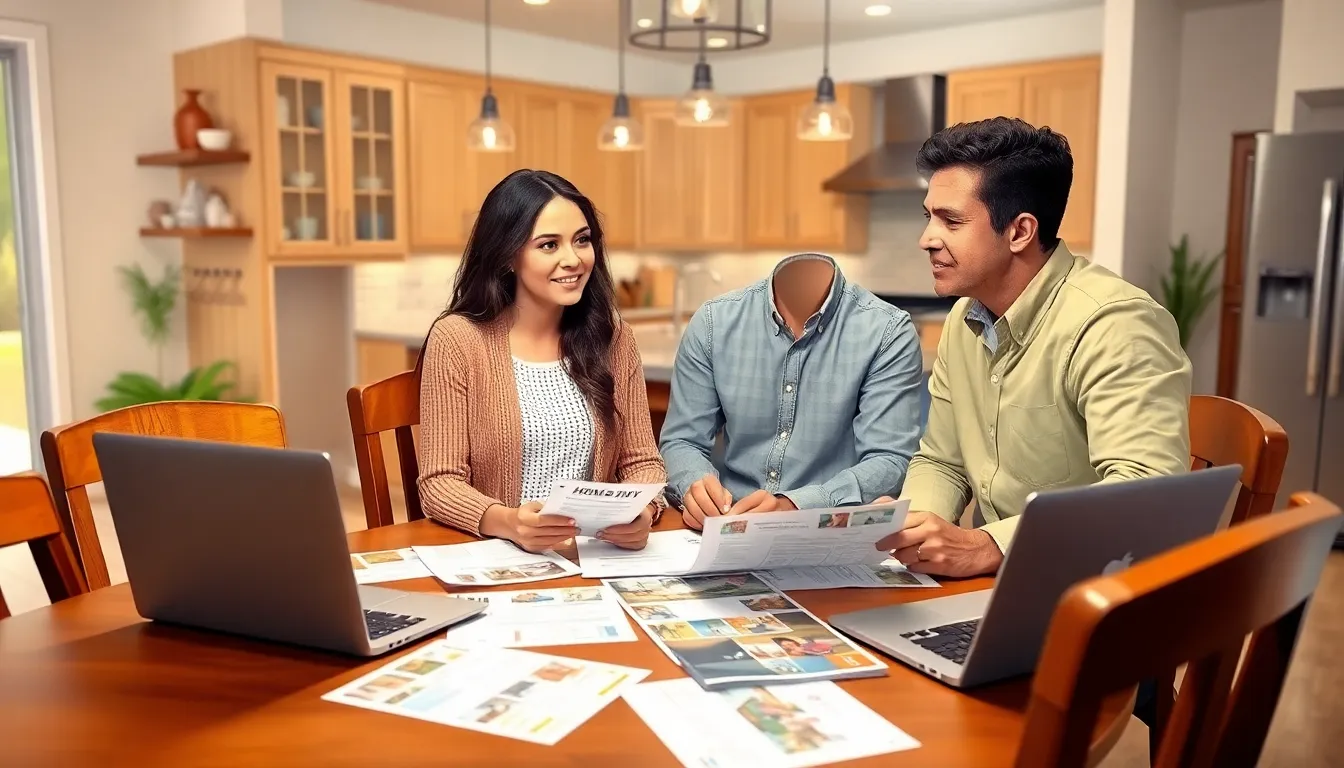Table of Contents
ToggleBuying a home can feel like trying to solve a Rubik’s Cube blindfolded—overwhelming and a bit confusing. With so many decisions to make and details to consider, it’s easy to get lost in the process. But fear not! A well-crafted home purchase checklist can turn that chaos into a smooth journey, helping buyers navigate the twists and turns of real estate with ease.
Understanding the Home Purchase Checklist
Navigating the complexities of home buying requires a structured approach. A comprehensive home purchase checklist simplifies the journey and ensures attention to detail.
Importance of a Home Purchase Checklist
Having a home purchase checklist streamlines the buying process significantly. It helps buyers visualize steps and deadlines, providing a clear roadmap. A checklist minimizes the potential for overlooking crucial tasks and financial considerations. It acts as a reference guide, helping individuals stay organized throughout the journey. Many buyers find that following a structured list reduces stress and enhances decision-making efficiency.
Key Components of a Home Purchase Checklist
Essential elements of a home purchase checklist include several key components. Budget overview plays a critical role, detailing affordability and financing options. A list of desired features helps narrow property searches, aligning with buyer priorities. Home inspections are vital, ensuring properties meet safety and quality standards. Understanding the closing process provides clarity on timeline and necessary paperwork. Finally, knowledge of neighborhood factors, such as schools and amenities, ensures informed choices during the buying process.
Preparing for Your Home Purchase

Prepping for a home purchase involves several crucial steps to ensure a smooth experience. Understanding personal finances and market conditions increases confidence during the process.
Setting Your Budget
Establishing a budget involves evaluating income, current expenses, and savings. Buyers often begin by calculating how much they can afford monthly for a mortgage. Assessing debt-to-income ratios reveals the maximum loan amount. It’s crucial to consider additional costs, such as property taxes, insurance, and maintenance. Creating a comprehensive budget helps buyers avoid financial strain. As an example, the average homebuyer allocates about 28-30% of their gross monthly income for housing expenses. Staying realistic during this stage increases the chances of making informed decisions.
Finding a Real Estate Agent
Finding a qualified real estate agent plays a pivotal role in the home buying process. Recommendations from friends and family can steer buyers toward reputable professionals. Researching online reviews and interviewing several candidates helps narrow choices. An experienced agent has in-depth knowledge of the local market, pricing trends, and neighborhoods. They also provide valuable insights on properties that match buyers’ needs. When selecting an agent, confirming their credentials and past client experiences enhances trust. A good agent can alleviate stress and streamline the home buying journey significantly.
Steps in the Home Buying Process
Navigating the home buying process involves several critical steps that ensure success.
Researching Neighborhoods
Choosing the right neighborhood is vital to the overall satisfaction of homeownership. Evaluating factors such as school ratings, crime statistics, and community amenities greatly influences lifestyle decisions. Averages indicate that homes in desirable neighborhoods often appreciate faster. Online resources like neighborhood guides and local forums provide insights into living conditions. Visiting neighborhoods at different times of day helps buyers gauge traffic patterns and noise levels. Participating in community events can also provide a feel for the local culture. Ultimately, selecting a neighborhood aligns with personal and family needs.
Attending Open Houses
Attending open houses allows buyers to explore properties firsthand. Buyers can observe layout, space, and design features that photos might not convey accurately. Interacting with the seller’s agent offers valuable information about property history and neighborhood specifics. Taking notes during multiple visits helps keep details organized. Questions about recent renovations and potential repairs hold significant importance. Understanding the pricing trend in the area can aid in making competitive offers. Most importantly, open houses contribute to informed decision-making through real-life experience.
Finalizing Your Home Purchase
Finalizing a home purchase involves several key actions that ensure a smooth transition to ownership. Buyers must effectively navigate the final stages of their journey.
Making an Offer
Offers typically reflect the market analysis and comparable property pricing. Crafting an offer involves determining an appropriate price and including contingencies, such as home inspections and financing. A well-prepared offer letter can also enhance the personal touch, showcasing the buyer’s commitment. Sellers may respond with acceptance, rejection, or a counteroffer. Maintaining clear communication and flexibility during this phase can lead to a successful negotiation outcome.
Closing the Deal
Closing the deal marks the finalization of the home purchase process. This stage requires reviewing and signing numerous documents, including the closing disclosure and mortgage agreement. Buyers should expect to provide proof of homeowners insurance and government-issued identification. At this point, it’s essential to verify that all agreed-upon repairs are completed. Conducting a final walkthrough ensures that the property is in the expected condition. Once everything is in order, the buyer pays closing costs, and the keys to the new home are exchanged.
Common Mistakes to Avoid
Homebuyers often overlook specific pitfalls that complicate their purchase process. Being aware of these mistakes can lead to a smoother experience.
Ignoring Inspection Reports
Homebuyers frequently skip reviewing inspection reports. Neglecting these reports can unveil significant issues with the property. Inspectors generally highlight critical problems like plumbing failures, electrical issues, and roof damages. Buyers should consider the cost of repairs when evaluating a property. Ignoring this information might lead to unexpected expenses down the road. It’s crucial to address any concerns raised during the inspection before closing. A well-informed buyer makes better choices regarding property investments.
Underestimating Additional Costs
Underestimating additional costs represents a common error in home purchasing. Buyers often focus on the down payment but overlook expenses like property taxes, insurance, and maintenance. On average, these costs can add up to 1-3% of the home’s value annually. Homeowners should account for utilities, repairs, and homeowners association fees, which can strain financial plans. Budgeting for these expenses ensures that surprises won’t derail a purchasing decision. A thorough calculation of all costs involved fosters informed financial commitments and more strategic long-term planning.
Navigating the home buying process can feel overwhelming but a well-structured checklist makes it manageable. By focusing on essential steps like budgeting researching neighborhoods and understanding the closing process buyers can streamline their journey.
Avoiding common pitfalls such as overlooking inspection reports or underestimating additional costs is crucial. With careful preparation and the right guidance buyers can approach their home purchase with confidence. A comprehensive checklist not only simplifies decision-making but also helps ensure that no important detail is missed along the way.
Equipped with the right tools and knowledge buyers can turn the complex task of purchasing a home into a rewarding experience.





